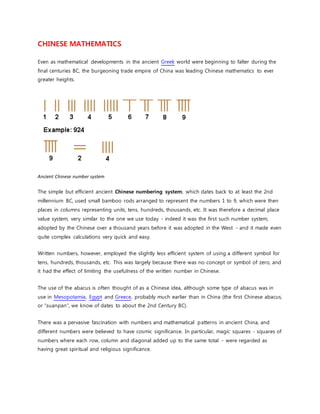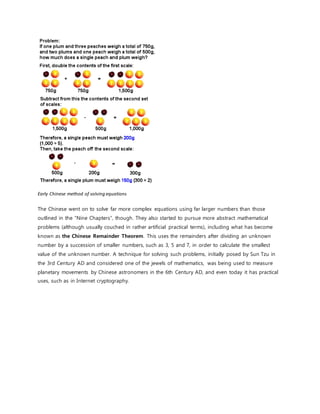1) Ancient Chinese mathematics developed an efficient decimal place value number system over 1000 years before the West adopted it, facilitating even complex calculations.
2) The "Nine Chapters on the Mathematical Art" textbook, written from around 200 BC, was important for educating mathematically competent administrators, covering practical problems and the first known method for solving equations.
3) By the 13th Century Golden Age of Chinese mathematics, over 30 prestigious schools had scholars like Qin Jiushao exploring solutions to quadratic and cubic equations hundreds of years before the West using similar repeated approximation methods.



